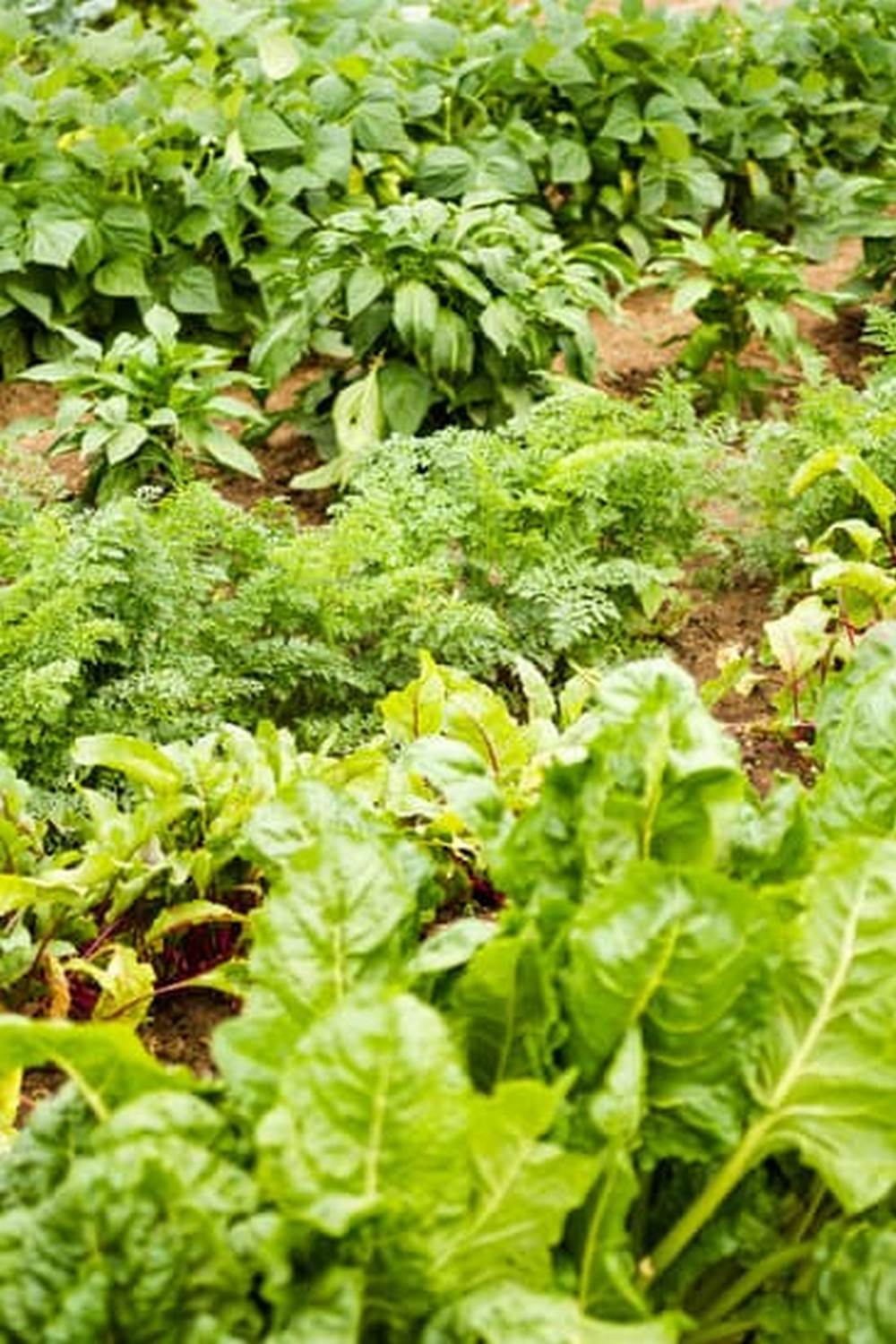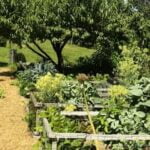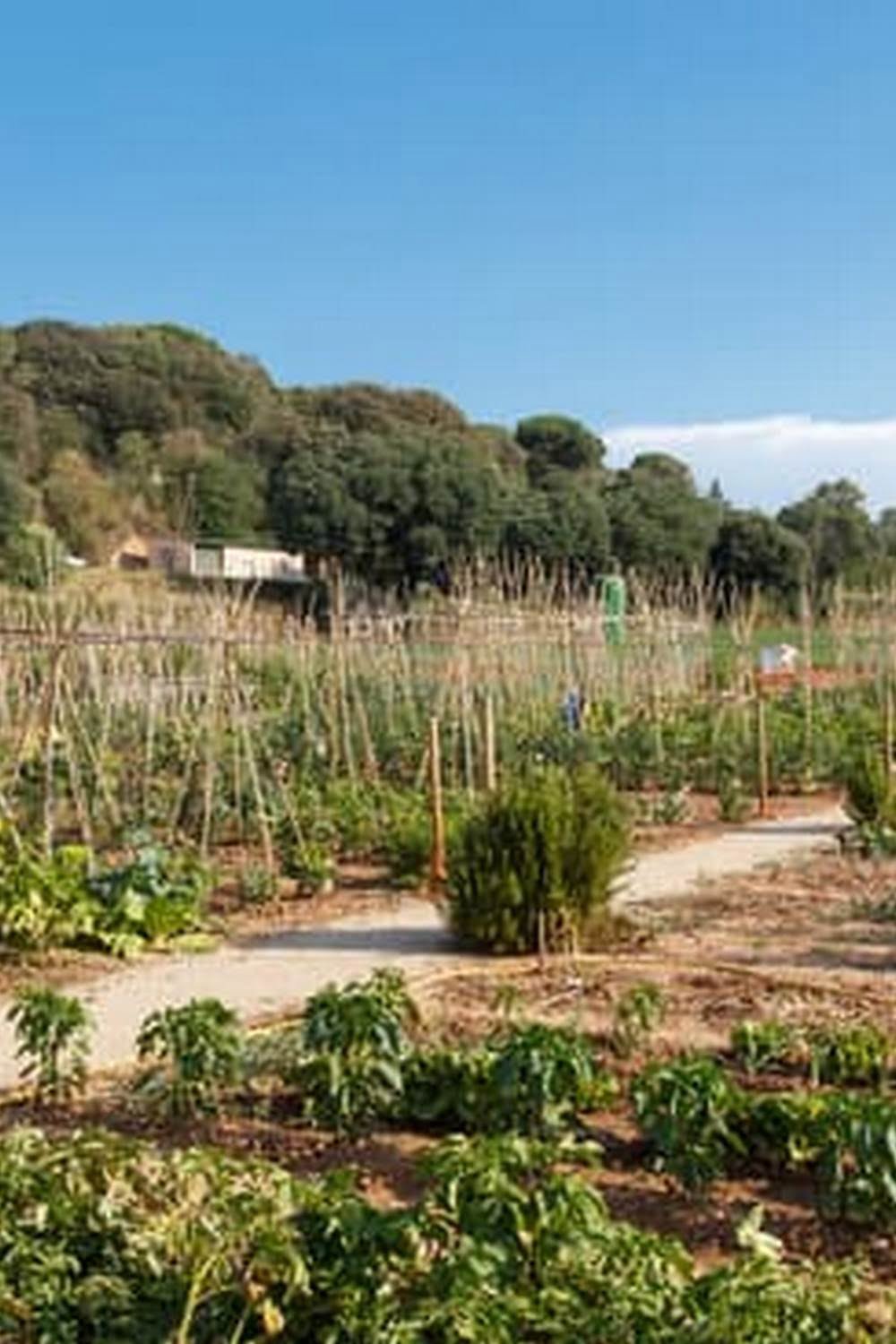Are wood chips good for vegetable gardens? This question has sparked a significant amount of debate and conflicting opinions among gardeners.
In this article, we will delve into the benefits and drawbacks of using wood chips in vegetable gardens, shedding light on their role in soil health and exploring their potential pros and cons. By understanding the science behind organic matter in soil health and examining real-life success stories, readers can make informed decisions about whether or not to incorporate wood chips into their own gardening practices.
Organic matter plays a vital role in creating fertile and nutrient-rich soil. As gardeners strive to cultivate thriving vegetable gardens, it is essential to understand how different materials can contribute to the organic matter content of the soil. Wood chips are known for their ability to break down over time, releasing nutrients into the soil as they decompose. This high carbon material can add beneficial organic matter to the soil, enhancing its structure and fertility.
Using wood chips as mulch in vegetable gardens offers several potential benefits. They serve as an effective moisture retention method by reducing evaporation from the soil surface, thus helping plants withstand dry spells. Additionally, wood chip mulch acts as a natural weed suppressant, minimizing competition for resources amongst vegetable plants. Wood chips also regulate soil temperature by providing insulation against extreme heat or cold. Furthermore, these mulch materials aid in preventing erosion and improving overall soil structure.
While wood chips have clear advantages in vegetable gardening, there are also potential drawbacks and challenges that need consideration. One common concern is nitrogen depletion, as wood chip decomposition requires nitrogen from the soil. Another issue is increased acidity due to certain types of wood chips that may lower pH levels over time.
Lastly, using wood chips can attract pests such as termites or slugs if not properly managed. However, with proper knowledge and implementation strategies outlined later in this article, these challenges can be mitigated effectively.
By examining both the benefits and potential drawbacks of wood chips in vegetable gardens, gardeners can make educated decisions based on their unique circumstances and goals. Throughout this article, we will provide insights into selecting the right types of wood chips, proper installation and maintenance techniques, and real-life success stories from gardeners who have experienced positive outcomes using wood chips.
Ultimately, understanding the pros and cons will empower readers to make informed choices about incorporating wood chips into their own vegetable gardening practices.
Understanding the Role of Organic Matter in Soil Health
The Importance of Organic Matter
Organic matter plays a crucial role in the health and fertility of soil. It is composed of decomposed plant and animal material, such as leaves, compost, and manure. Organic matter contributes to soil structure, water retention, and nutrient availability for plants. Additionally, it encourages beneficial microbial activity in the soil, which aids in breaking down organic materials and releasing nutrients that are essential for plant growth.
Wood Chips as a Source of Organic Matter
Wood chips can be a valuable source of organic matter for vegetable gardens. When wood chips break down over time, they add nutrients to the soil and improve its overall quality. As the wood chips decompose, they release carbon into the soil, which provides an energy source for microorganisms.
Furthermore, wood chips contribute to moisture retention in the soil. They create a protective layer that slows down evaporation and reduces water loss due to sun exposure. This can be especially beneficial during dry periods or in regions with limited access to water resources.
The Role of Wood Chips in Soil Improvement
In addition to increasing organic matter content and moisture retention, wood chips also help improve soil structure. As they break down, they create air pockets within the soil that promote better drainage and root development. This results in looser and more friable soil texture.
Moreover, using wood chips as mulch in vegetable gardens helps regulate soil temperature by insulating against extreme heat or cold. This can be especially advantageous when growing sensitive crops that may be susceptible to temperature fluctuations.
By understanding how wood chips contribute to the organic matter content of soil and their role in improving its overall health and fertility, gardeners can make informed decisions about whether to incorporate them into their vegetable gardens.
Pros of Using Wood Chips in Vegetable Gardens
Benefits of Using Wood Chips as Mulch
Using wood chips as mulch in vegetable gardens offers several advantages. One of the main benefits is their ability to retain moisture in the soil. The wood chips act as a barrier, reducing evaporation and keeping the soil moist for longer periods. This can be especially beneficial during hot summer months or in regions with limited rainfall.
Another advantage of using wood chips as mulch is their ability to suppress weeds. When applied correctly, a thick layer of wood chips can effectively smother weed growth by blocking sunlight from reaching the weed seeds and preventing them from germinating. This helps reduce the competition for nutrients and resources between the vegetables and unwanted plants.
Furthermore, wood chips can play a crucial role in regulating soil temperature. They act as insulation, protecting the soil from extreme temperature fluctuations, which can be damaging to plant roots. By maintaining more stable soil temperatures, wood chips create a more favorable environment for vegetable growth.
Improvement of Soil Structure and Erosion Prevention
Wood chips also contribute to the improvement of soil structure in vegetable gardens. As they break down gradually over time, they release organic matter into the soil. This organic matter enhances soil fertility by providing essential nutrients and promoting beneficial microbial activity.
In addition to improving fertility, wood chips help prevent erosion in vegetable gardens. By creating a protective layer on top of the soil, wood chips minimize water runoff during heavy rainfall or irrigation. This reduces the risk of nutrient loss and keeps valuable topsoil intact.
It is important to note that while wood chips offer these advantages, they are most effective when used in conjunction with other organic gardening practices such as proper crop rotation, regular composting, and appropriate water management techniques. Taking into account these factors will help maximize the benefits provided by wood chip mulching while minimizing any potential drawbacks.
Potential Cons and Challenges of Wood Chips in Vegetable Gardens
While there are many benefits to using wood chips in vegetable gardens, it is important to be aware of the potential drawbacks and challenges associated with this gardening practice. Understanding these cons can help gardeners make informed decisions and take necessary precautions to mitigate any negative effects.
One potential drawback of using wood chips is the risk of nitrogen depletion in the soil. As wood chips decompose, they use up nitrogen from the soil, which can limit its availability for plants. This can result in nutrient deficiencies and poor plant growth.
To address this issue, gardeners can incorporate nitrogen-rich amendments such as compost or manure into the soil before applying wood chips. Additionally, regular addition of compost or organic fertilizers throughout the growing season can help replenish nitrogen levels in the soil.
Another challenge of using wood chips is that they may contribute to increased acidity in the soil over time. Most wood chips have a pH between 5 and 6, which is acidic compared to the neutral pH preferred by most vegetables. Acidic soil conditions can negatively affect nutrient availability and plant health. To offset this problem, gardeners can add agricultural lime or other alkaline materials to raise the pH and maintain optimal growing conditions for vegetables.
Lastly, using wood chips as mulch in vegetable gardens may attract pests such as slugs or snails. These pests tend to hide beneath the moist layer of wood chips during daytime and feast on vegetable plants at night. To prevent pest problems, gardeners should regularly monitor their garden beds for signs of pest infestation and take appropriate measures such as handpicking or using organic pest control methods if necessary.
Despite these challenges, many experienced gardeners have successfully used wood chips in their vegetable gardens with great results. By understanding these potential cons and implementing appropriate strategies to address them, gardeners can take advantage of the benefits offered by wood chip mulch while minimizing any negative impacts on their vegetable plants.
| Potential Cons and Challenges | Strategies to Mitigate |
|---|---|
| Nitrogen depletion in the soil | – Incorporate nitrogen-rich amendments into the soil before applying wood chips.
|
| Increased acidity in the soil | – Add agricultural lime or other alkaline materials to raise the pH of the soil. |
| Pest problems (slugs, snails, etc.) | – Monitor garden beds regularly for signs of pest infestation.
|
Selecting the Right Type of Wood Chips for Vegetable Gardens
When using wood chips in vegetable gardens, it is crucial to select the right type of wood chips that will promote the health and productivity of the plants. Not all wood chips are created equal, as different types of wood can have varying effects on soil composition and plant growth. Choosing the appropriate wood chip materials can significantly impact the success of your vegetable garden.
Certain types of wood chips are better suited for vegetable gardens due to their nutrient content and decomposition rate. Hardwood chips from deciduous trees such as oak, maple, or fruit trees are generally recommended for use in vegetable gardens. These woods break down slowly, providing a long-lasting source of organic matter and nutrients for the soil. They also tend to have a balanced carbon-to-nitrogen ratio, which helps prevent nitrogen depletion in the soil.
On the other hand, softwood chips from coniferous trees like pine or cedar should be avoided in vegetable gardens. These types of wood chips decompose quickly and release acidic compounds into the soil as they break down. This acidity could alter the pH balance of the soil, rendering it unsuitable for growing vegetables. Furthermore, some softwoods contain natural oils or resins that may inhibit seed germination or affect plant growth.
| Wood Chip Variety | Benefits |
|---|---|
| Oak | Durable, adds nutrients gradually |
| Maple | Slow decomposition rate, good nutrient content |
| Fruit Trees (apple, cherry) | Provide organic matter and nutrients |
When obtaining wood chips, it is also essential to consider their source. Using locally sourced wood chips can help prevent the introduction of weed seeds or harmful pests into your garden. If possible, avoid using wood chips from unknown sources, as they may be contaminated with herbicides or other chemicals that could harm your vegetable plants.
By carefully selecting the right type of wood chips for your vegetable garden and being mindful of the source, you can maximize their benefits and ensure the health of your plants. Remember to use hardwood chips like oak, maple, or fruit tree wood chips, while avoiding softwood chips like pine or cedar. Taking these factors into consideration will help create an optimal environment for your vegetable garden to thrive.
Proper Installation and Maintenance Techniques for Wood Chips
Installing wood chips in a vegetable garden requires careful attention to ensure optimal results. By following the proper techniques, you can effectively incorporate wood chips into your garden and maximize their benefits.
- Preparation: Before applying wood chips to your vegetable garden, it is essential to prepare the soil properly. Begin by removing any weeds or existing vegetation from the area where you plan to lay down the wood chips. This will prevent them from growing through the mulch later on. Additionally, consider adding a layer of compost or organic fertilizer to provide an extra boost of nutrition for your plants.
- Application: Once the soil is prepared, spread a layer of wood chips evenly over the garden bed. Aim for a thickness of around 2-4 inches, ensuring that you leave a gap around the base of each plant to avoid direct contact between the mulch and stems or trunks. Gently rake the wood chips into place, taking care not to disturb any underlying soil.
- Maintenance: Regular upkeep is crucial to ensure that wood chips continue to benefit your vegetable garden without causing any issues. Monitor moisture levels in the soil and add water as needed to keep it consistently damp but not waterlogged. While wood chips help retain moisture, they can also restrict air circulation if they become overly compacted or waterlogged.
To maintain optimal conditions for your plants, periodically check for nitrogen depletion in the soil. As wood chips break down, they require nitrogen from the soil to aid in decomposition. To counterbalance this potential depletion, consider supplementing with additional nitrogen-rich fertilizers or amendments as needed.
Regularly inspect your garden beds for any signs of pests such as slugs or snails that may be attracted to the moist environment created by wood chips. Use appropriate pest control methods like natural repellents or physical barriers if necessary.
Remember that over time, wood chips will break down and decompose further, contributing to the organic matter content of your soil. As this happens, you may need to periodically apply additional wood chips to maintain an adequate mulch layer.
By following these proper installation and maintenance techniques for wood chips in your vegetable garden, you can effectively harness their benefits without encountering unnecessary challenges or drawbacks.
Success Stories
Many gardeners have found success in using wood chips as a mulch in their vegetable gardens. These success stories serve as valuable evidence for the benefits that wood chips can bring to vegetable gardens. Through their experiences, these gardeners have observed positive outcomes such as improved soil fertility, reduced weed growth, and healthier plant growth.
One successful technique that many gardeners have employed is the “Back to Eden” method, popularized by the documentary of the same name. This method involves covering the soil with a thick layer of wood chips, mimicking the natural forest floor and allowing decomposition to occur slowly over time. Gardeners who have adopted this approach report significant improvements in soil structure and moisture retention.
Another success story comes from Cathy Payne, a gardener who transformed her rocky hillside garden into a productive vegetable paradise using wood chips. According to Cathy, not only did the wood chips help suppress weeds and retain moisture in her dry climate but they also played a crucial role in mitigating erosion on her sloping terrain.
To achieve success with wood chips in a vegetable garden, it is important to follow some key guidelines shared by experienced gardeners. Firstly, it is recommended to let fresh wood chips age for at least six months before using them in your garden.
This allows time for any potential nitrogen depletion to occur, preventing competition between plants and microorganisms for this essential nutrient. Secondly, regularly monitoring nutrient levels and pH balance can help address potential acidity issues caused by the decomposition of wood chips.
Overall, these success stories emphasize that when used properly and with consideration for specific challenges, wood chips can be highly beneficial in vegetable gardens. They provide valuable organic matter and contribute to improved soil health while reducing weed growth and preventing erosion. By adopting proper techniques such as adequate aging of wood chips and regular maintenance checks on nutrient levels, gardeners can reap the rewards of using wood chips in their vegetable gardens.
Conclusion
In conclusion, the use of wood chips in vegetable gardens is a topic that elicits differing opinions among gardeners. Throughout this article, we have explored both the benefits and drawbacks of using wood chips and provided guidance on how to make an informed decision.
One of the key advantages of using wood chips is their ability to contribute to soil health through organic matter. By adding wood chips as mulch to vegetable gardens, gardeners can improve soil structure, retain moisture, suppress weeds, regulate soil temperature, and prevent erosion. These benefits can ultimately lead to healthier plants and higher yields.
However, it is important to consider the potential challenges associated with using wood chips. One major concern is the risk of nitrogen depletion in the soil due to the breakdown process of wood chips. Additionally, certain types of wood chips may increase acidity levels in the soil or attract pests. To mitigate these challenges, gardeners should follow proper installation and maintenance techniques, such as ensuring a balanced nitrogen input and selecting appropriate wood chip materials.
Ultimately, the decision to use wood chips in a vegetable garden should be based on individual gardening goals and circumstances. By weighing the pros and cons discussed in this article, readers can make an informed choice that aligns with their specific needs. It is always recommended to conduct further research and consult with local gardening experts before implementing any new practices in order to achieve optimal results for their own unique vegetable gardens.
Frequently Asked Questions
Should I put wood chips in my vegetable garden?
Putting wood chips in a vegetable garden can have both pros and cons. On one hand, wood chips can help with moisture retention in the soil, reduce weed growth, and provide insulation to protect the roots of plants during extreme temperatures. They also gradually break down over time, enriching the soil with organic matter. However, it’s important to consider some potential drawbacks as well.
Wood chips can temporarily tie up nitrogen in the soil as they decompose, potentially depriving plants of this essential nutrient. Additionally, certain types of wood chips may contain chemicals or toxins that could be harmful to plants or humans if present in high concentrations. It is therefore crucial to use untreated wood chips from a reputable source and monitor nitrogen levels in the soil when using them.
What kind of wood chips are best for a vegetable garden?
When considering what kind of wood chips are best for a vegetable garden, it is generally recommended to use hardwood chips rather than softwood ones. Hardwood such as oak, maple, or fruit tree varieties tends to break down more slowly than softwood like pine or cedar, offering longer-lasting mulch and organic matter contributions to the soil.
Hardwood chips also tend to have less resin content compared to softwoods, which reduces the risk of chemical compounds entering the garden ecosystem through decomposition. Moreover, it is crucial to avoid using pressure-treated wood chips or any other treated wood products in a vegetable garden since they might contain toxic substances that can leach into the soil.
Should I put wood chips in my garden?
The decision of whether or not to put wood chips in a garden depends on various factors. Wood chips can serve as an effective mulch for garden beds by suppressing weeds and conserving moisture. Additionally, they provide insulation and protection against temperature fluctuations for plant roots during extreme weather conditions. However, there are considerations to keep in mind before using wood chips in your garden: First and foremost, ensure you are using untreated wood chips from a reliable source since treated woods may contain harmful substances.
Secondly, keep in mind that wood chips can temporarily drain nitrogen from the soil as they decompose, so additional nitrogen fertilization might be necessary. Lastly, it is essential to monitor the acidity levels of your soil if using wood chips, as their decomposition process can slightly lower the pH over time. Overall, integrating wood chips into a garden can be beneficial, but careful consideration and monitoring of possible effects are vital throughout the process.

If you’re looking to get into vegetable gardening, or are just looking for some tips on how to make your current garden better, then you’ve come to the right place! My name is Ethel and I have been gardening for years. In this blog, I’m going to share with you some of my best tips on how to create a successful vegetable garden.





